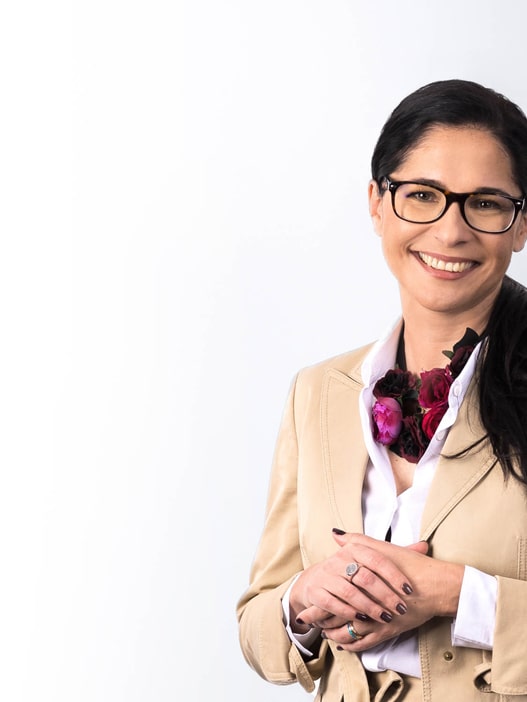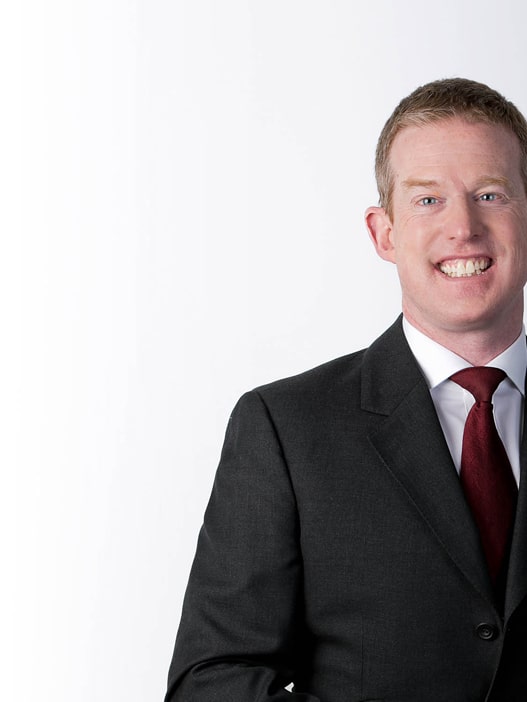Change & Recovery Resilience and opportunity in Central & Eastern Europe
CEE continues to rise despite pandemic
Growth arc long predates Covid-19 and will continue past it
Last year was a training course in adaption and agility, and there were many lessons learned in CEE and across the world. It. However, businesses and investors in CEE can continue to look forward to numerous opportunities in the region due to long term trends that are far larger and more influential than the temporary challenges of the pandemic.
How did companies in CEE deal with the challenges of last year?
This is a region of game changers and outside the box thinkers, who are well equipped to face challenges. Historically, people are resilient in this region and have learned to adapt, to be agile and creative. This allowed for intense business transformation. Instead of a 2-year plan for some businesses, it became a 2-month plan, for example.
Entrepreneurs have blossomed
Those looking beyond their core businesses to create value reinvented themselves and had the courage to make tricky decisions. For example, an M&A client of Wolf Theiss, a leading Romanian furniture and textile products company, capitalised on its manufacturing expertise and began producing personal protective equipment to offset the downturn in the furniture industry which is one of many examples of outside the box thinkers in the region.
Funds and bold deal makers earn high returns and get ahead of the curve
The same is true with private equity funds and venture capital funds in the region. Different from the previous decade, there has actually been more venture capital coming into the region in the last 12 – 18 months. After the changes in the region in early 1990s, we saw the first wave of privatisations, and larger private equity investments. In the last few years, there has been an increase in entrepreneurship in the region, and new venture capital coming in at start-up series A and B levels.
In March 2020, there was concern if this will this continue: what will happen, will that capital find different places, in western Europe for example?
Instead there has been an uptick in venture capital all across CEE and new entrepreneurship. While the data is young, evidence indicates that venture capital investment doubled, particularly in technology-related industries and at larger ticket sizes, driven in part by increased interest by US VC funds.
New sources of funding for venture capital
What is interesting is that the original venture capital was getting cash and capital from the European Investment Fund, but now some are in their 2nd or even 3rd fund.
Much more private capital is coming in, which is very attractive because even during 2020, there was family office and private wealth in the region willing to put its money into venture capital funds. This in turn leads to the virtuous circle because entrepreneurs can access capital and grow. This is a very positive situation for the region.
New tech industries, healthcare and clean energy which are future tech industries which will help the region grow.
Is this about risk management instead of risk avoidance?
Digitalisation leads the way
Lots of transactions in CEE are being led by digitalisation, not only by software companies but by manufacturing deals, which have been led by:
- digitalisation, rationalization of manufacturing lines
- the Internet of things
- new communication
- automation
Lots of companies looked at their employment situation, did the analysis whether that should be rationalised, made the investments into digitalisation but did not reduce employment.
This is tremendously positive for CEE and shows that there is Lots of talent in CEE not only in bigger cities but in smaller manufacturing locations . Companies made a commitment to the region instead of looking for short term result.
Significant increase in US investment, which brings smart money and know-how
CEE can attract investment from all over the world, including the US, Western Europe, Russia, Turkey, Middle East, and South Africa, which waxes and wanes with the years and as macros trends develop. But the increase we have seen in US investment (both by funds and corporates) comes together with know-how, technology, and international trade knowledge. It also gives CEE workers access to global thinking.
What are the lessons from blue chip investments in the region?
Slow is better than fast
We have had a very positive experience working with with blue chips clients in 2020 along with interesting learnings. An interesting example is a deal in which we started working with a big gaming client involving hundreds of millions of Euros in the Spring of 2020.
This large gaming transaction was put on hold because of the pandemic. We resumed due diligence and transactional work in September 2020 and are waiting to close in the beginning of April 2021. What this shows is that for many large clients, slow is better than fast.
Large companies plan for logistical challenges and other disruptions and incorporate more time into planning. Travel restrictions interfere with conducting site visits, management presentations, conducting due diligence, etc. Some transactions have even been delayed because of regulatory filings.
While this can allow companies to develop synergies, get to know each other better, and enhance cooperation, it is good to build in additional time in some transactions. However, this is not ideal in tech deals because time is of the essence there.
Businesses had to switch over to short term thinking
Entrepreneurs who made short term decisions in 2020 were successful. Retailers who had to launch orders in March for Christmas had to cancel Christmas planning and think about “now”.
Agile companies made swift decisions, integrated with other businesses, thought about e-commerce, moved stock – these were the successful ones.
Businesses had to reinvent themselves and adapt
Businesses learned to be more sophisticated and learned to build in complex structures. Half of deals involved some form of deferred consideration, earn outs, reinvestments, rollovers, etc.
Funders who would never accept an earnout without a minimum floor, would sign a transaction with such mechanism. More and more deals were built on lock box mechanisms including with equity tickers – which means that sellers will benefit from cash profits generated between the locked box date and completion.
How is CEE currently perceived beyond its borders?
Trade and direct investment
There are really positive tailwinds in CEE right now, and there has been a significant increase in FDI in recent years. Fortunately, trade and direct investment and did not stop during the crisis. To the contrary, manufactures realised that having production closer to market was advantageous. Looking at early data we see an increase in many of the manufacturing sectors.
- Automotive, REMs, petrochemical farmer uptick in FDI in 2020
- Tempered slightly by FDI restrictions to allow for regulatory oversight for sales of companies in strategic sectors
- Nonetheless, lots of investment from the US
- FDI coming from Germany, Italy, France
Talent is returning to CEE from abroad
The region experienced a loss during 1989 and 1990, after the changes. It was a loss as people went to the UK, the US, Germany and obtained jobs and stayed. This is clearly changing, and talented individuals are coming back.
In terms of venture capital, lots of the entrepreneurs are people coming back and building businesses, bringing with them internationalism and new ideas.
People with money, founders are coming back (VC firms) from overseas, and they have had international experience and bring new talent with them.
Venture capital is a very different form of investment than Private Equity and private investment. PE seeks operational influence and control and having a board seat as an industry partner. Venture capital is more focused on trust in the founders balanced with shareholder mechanisms to protect its investment value, giving the company capital and what they need to succeed without being overly involved in daily operations. We see trust in these entrepreneurs to develop and grow businesses in the region.
CEE has plenty of opportunities in 2021
There is an acceleration of trend towards digitalisation driving deals in the region. As local ears, we are the first to know about the tech unrest and developments in CEE.
Now the crisis means that all companies must be digital one way or another. Intangible assets are of critical vehicle for realisation of value. CEE has wealth of such tech companies, which can be targets or providers of targets.
Despite the slowdown, we continue to sign and close transactions in 2021. As advisors in the region, our role is to put together sellers and buyers. With our deal logs and lists of viable targets, this allows us to contribute to deal making itself. We are aware of opportunities and businesses which have good foundations and competent leaders, who are M&A champions.
Relocation of product side in CEE and redesign of supply chain
The trend of production moving to CEE brings it closer to European markets, which is nearshoring. This of course also creates opportunities in the region. This dovetails nicely with our wider outlook and again puts CEE in the spotlight.
Combination of companies coming up and those 30 years after the changes
Companies from the ’90s are of substantial size now and are leaders with a significant size in the market, looking out for deals, transactions, and joint ventures internationally.
These companies are deciding what is best strategy, if they will grow laterally, if they will expand into new markets, to bring in partners, to sell a stake or sell completely. This is complemented by the return of foreign talent and the blossoming of new entrepreneurs.
Optimism for the future of the region
Everyone hopes the lockdowns will not last much longer, and CEE has much to look forward to beyond the pandemic due to the very positive combination of factors explored in this article.
International companies looking at the region in terms of inbound investment and for CEE companies looking outbound internationally will all find plenty of opportunities to succeed.
Wolf Theiss looks forward to maintaining its position as a trusted local partner as CEE continues to grow and develop in exciting ways.

